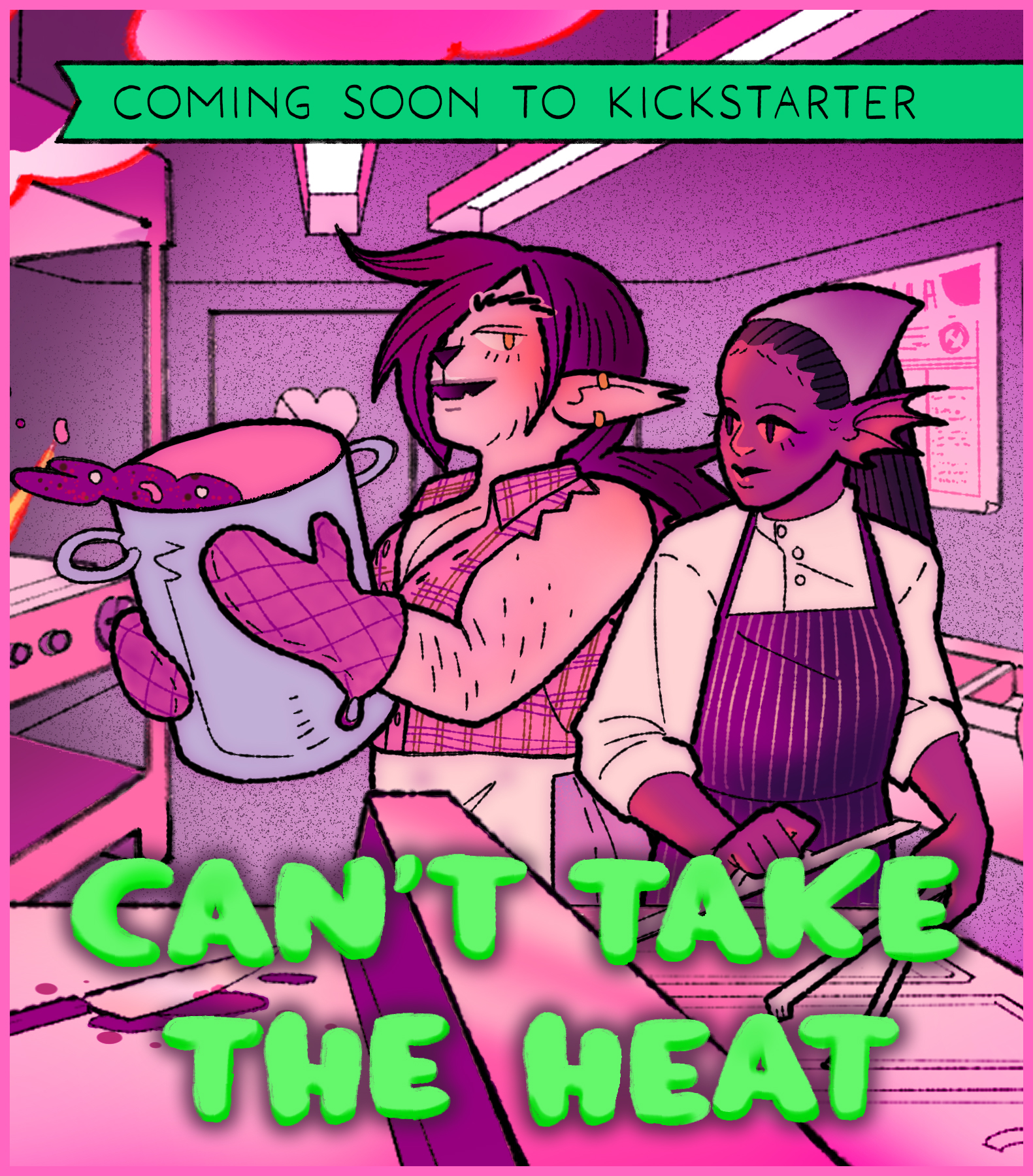Sicko Worldbuilding
The weekend Return of the King came out, the sun was just peaking above the horizon when my friend Mike and I piled into my dad’s truck and made the forty minute pilgrimage into the city. Dad didn’t even park the truck, pulling up to one of the twenty entrances that led into The Mall and letting us out. I’m not even sure he fully stopped, eager to get back home and enjoy a day without any kids around. We hustled inside and prepared for our day, with just enough allowance cash that we could get the all-day pass at Blue Shift Gaming, a meal at lunch, and see the movie in the evening. We weren’t there to explore the mall, we were there to park our butts in uncomfortable computer chairs, boot up the latest games on the fastest PCs and play until we got too hungry to continue. I remember Mike saying to forget about the movie, but it was the last one and I was a huge fan, so there was no way I was missing it. Reluctantly, he agreed.
That evening, after hauling ourselves across The Mall and up multiple escalators, we arrived at the theatre.
And as we walked in, I felt the dragon fire warming my face.
Biblically Inaccurate Religions
I tend to oscillate rapidly between projects I’m interested in, like some kind of misfiring neuron in an RPG-soaked braincell. Right now, I’m working on a science-fantasy megadungeon / ruined city for my home group, but swinging in the other direction means shifting to my modern day setting. I’ve got a lot of plans to run a hodgepodge of games in that setting, except something has been tripping me up about prepping for it.
I don’t want it to be Earth. I want it to be Earth-like.
Baseline Worldbuilding
Forgive me, but I must post theory.
I want to talk about worldbuilding, cognitive load, and the narrative baseline. Let’s first work to define what the narrative baseline is, and go from there. Every person has a baseline that they are comfortable with, and this baseline comes from a wide variety of sources. Mostly, it comes from your cultural background, your life experience, and the stories you’ve absorbed. When I say stories I mean things of all media—movies, books, television, anime, games, theatre, spoken word poetry, your friend telling you about their wacky antics, etc. Everyone collects stories as they go about their lives. The place you grew up, and the people you were around, also inform your narrative baseline. As someone who grew up in rural middle-of-nowhere Canada, it’s no surprise that my experience is incredibly different from someone who grew up in the heart of Tokyo. If you work as a cyber security professional you’re going to have a different starting position when it comes to a cyberpunk game than
someone who works in a warehouse.
Gambling on the Gatorbarge
Deep in the darkest parts of the Prismatic Wasteland discord server a bunch of us bloggers and designers decided to do a little Secret Santa. Instead of socks and cheap household appliances, we followed the gift guide over at Explorers Design (find games and rate them, play them, write about them, or design for them). For my pick, I got Franco Alvarado, who designs under Root Devil.
The Art of Bartering
There’s a special place in the depths of my heart for those freaky little merchants you find in odd places. The concept of “dungeon merchants” has been around forever, especially in mega-dungeons, and I’m not breaking new ground here. In fact, you can go and check out a major piece of inspiration for this post by heading to Joshy McCroo’s itch page and grabbing At the Shrine of Fortitude. It’s full of weird merchants, and the method of discovering them at the shrine is a full-on genius idea by hexculture.
Encountering a strange merchant in a strange land (like navigating a dungeon, wandering a swamp, locked in a dream prison, or visiting a cloud fortress) should play out a bit different than dealing with the regular city peddlers you pick up potions and arrows from.
The Somata Engraver
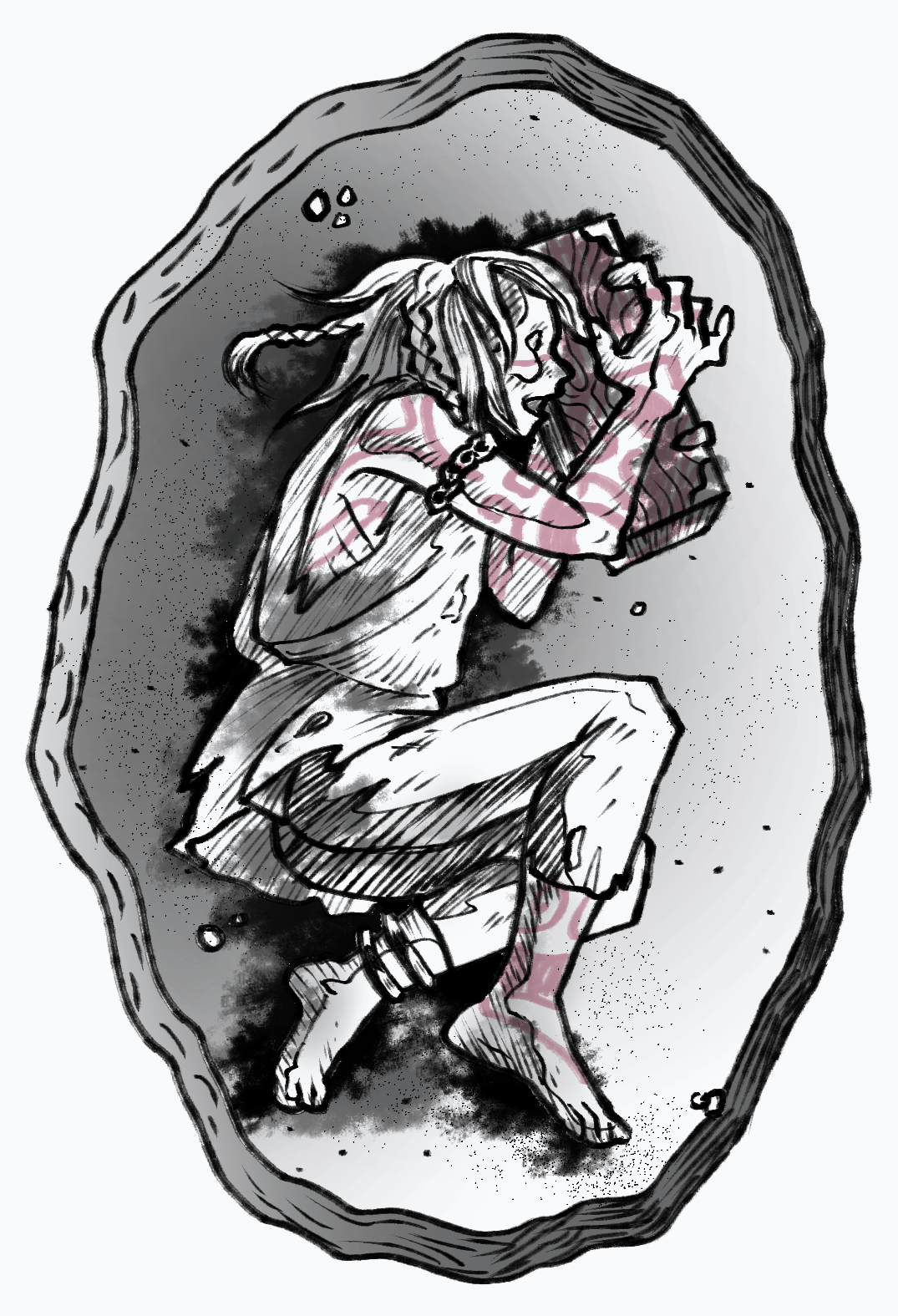
There exists, within the world, a single somata engraving kit. It is not something one stumbles upon by luck or chance, and it cannot be found through research, coin, or word of mouth. When the kit chooses to be found, it is found. The small box is carved from cherry wood and bleached bone, with silver clasps and ornate hinges. Inside, stiffened felt cradles each engraving tool snuggly in their rightful places.
When you find the kit, it will be on the body of a man freshly perished, his arms curled around it like a lost child, head bowed in reverence, refusing to let go even in death. His flesh is cut and scarred, once smooth skin turned into a twisting network of gouged chasms, all the way to the bone in places. In the right light at the right time, like under the shine of the midsummer sun or in the hallowed grounds of the dead, the scars shine with faded color. The kit itself, when torn from his grasp, reveals the secret of the man’s flesh-markings. Inside, five chisels—varying in size from a hummingbird’s beak to a grizzly’s claw—await eager new hands, each one as sharp as a spurned lover’s stiletto. Any single graze across skin from the blade by clumsy hands will draw blood from flesh.
The artwork on this post was created by Norn Noszka.
A Person-Shaped Hole
Hypothetical time: you’re starting a new game and want to have all the player characters connected in a way that creates just the right amount of drama, tension, and connective tissue. There needs to be an iron-clad bond between them, but you’re having trouble coming up with the solution. Have no fear, theoretical game-starter I just created! I’m going to share what I consider one of the strongest, electrifying ways to connect the characters.
I present the person-shaped hole.
Collaborative Worldbuilding: Glimpses
When I’m running a game, one of the highlights for me is inviting players to collaboratively build the world with me. In the past, this has resulted in a few hiccups. Enter this post, where I will attempt to solve them all. Rather than the players having carte blanche on worldbuilding, I want to add some structure to keep the ideas on topic and the game moving. I’ve written about this before and I still believe world anchors are foundational to my games, but I want to try and tackle this from a different angle
Kentaro Miura on Skill
I’m reading Berserk.
There’s a part—almost 200 chapters in—where Guts is teaching Isidro how to fight. Here’s the panels:
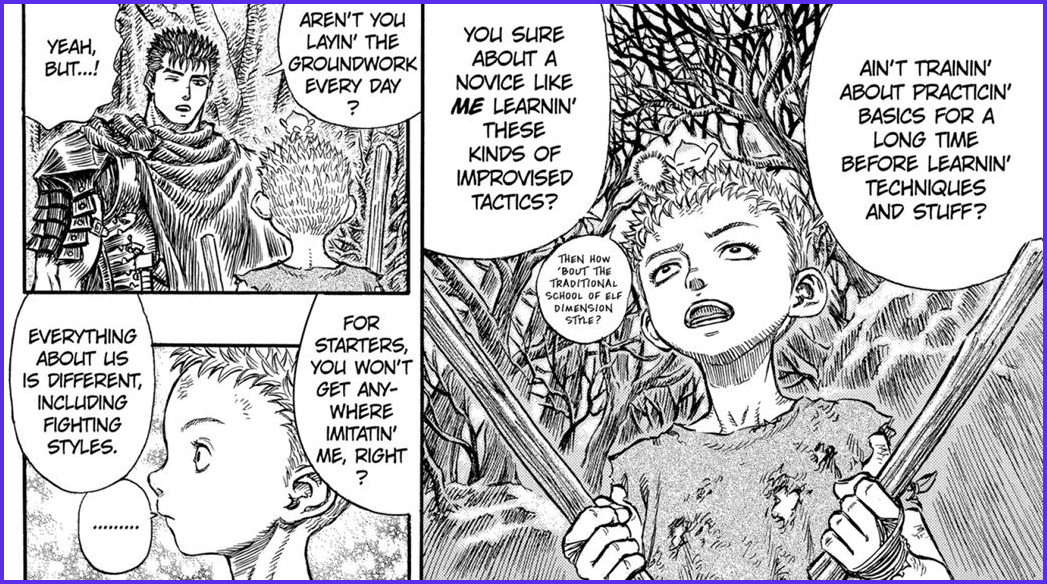
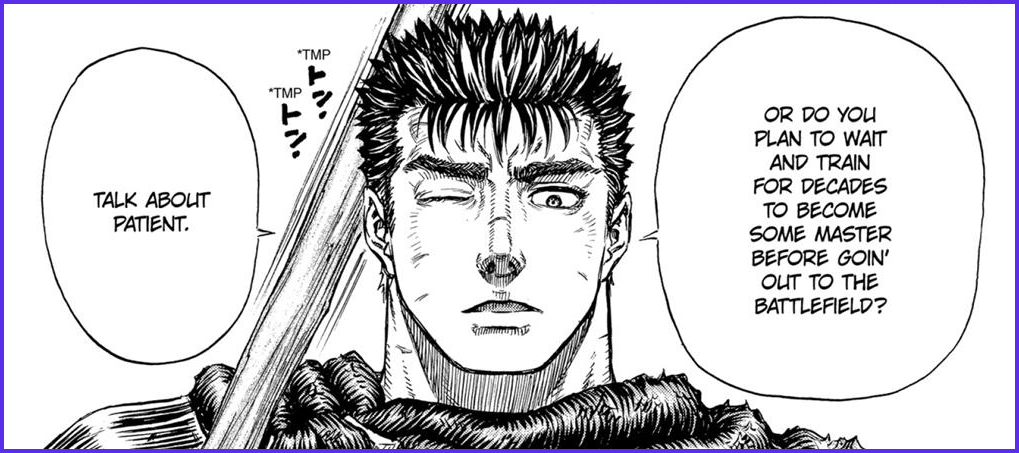
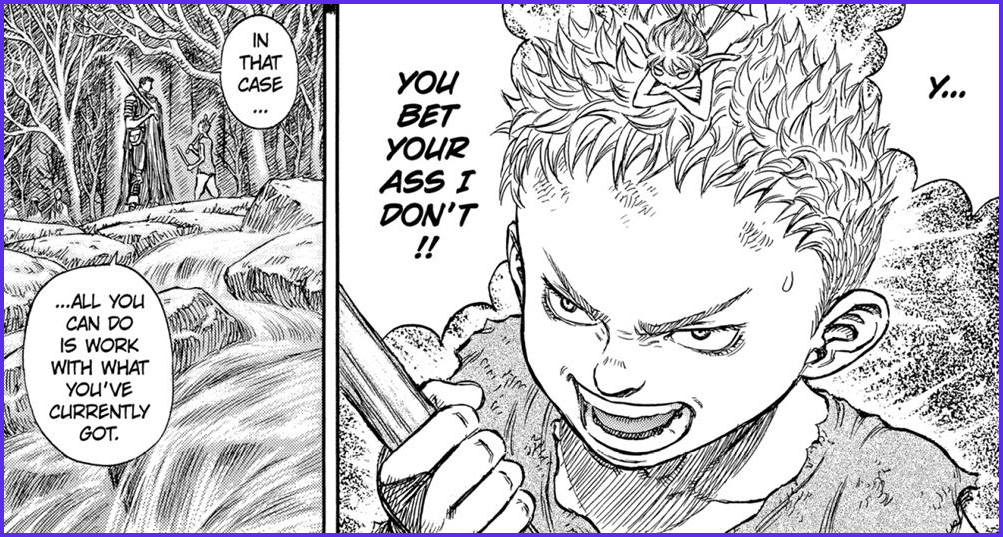
The core of these panels seem to be drawing on Kentaro Miura’s musings on the creation of art more than they’re drawing on his knowledge of warfare and sword-fighting. When I first came across them, they struck me immediately as Kentaro’s thoughts in regards to others asking him “how do I become you?” And I think with just these six panels, we get the answer:
You cannot practice your way into becoming a master.
You are not, and never will be, Kentaro Miura.
New Year’s Resolution Systems
Prismatic Wasteland has issued a challenge and who am I to resist such a thing?
My challenge is thus: In January 2024, come up with a new resolution mechanic for a TTRPG and give it a name. It doesn’t need to be good (in fact, most the good ones have probably already been taken). It just needs to be new! You don’t need to plan to use it in your games; it can be absolute detritus for you. But one blogger’s trash is another designer’s treasure. You never know how great an impact one throwaway idea on a blog might have.
2023 Mindstorm Retrospective
Alright, another year in the books means that we’re going to go through files, notes, and memories and try to recap this thing. This is a mostly self-indulgent post, rough around the edges, and posted for posterity’s sake.
A Demon of Three Notes
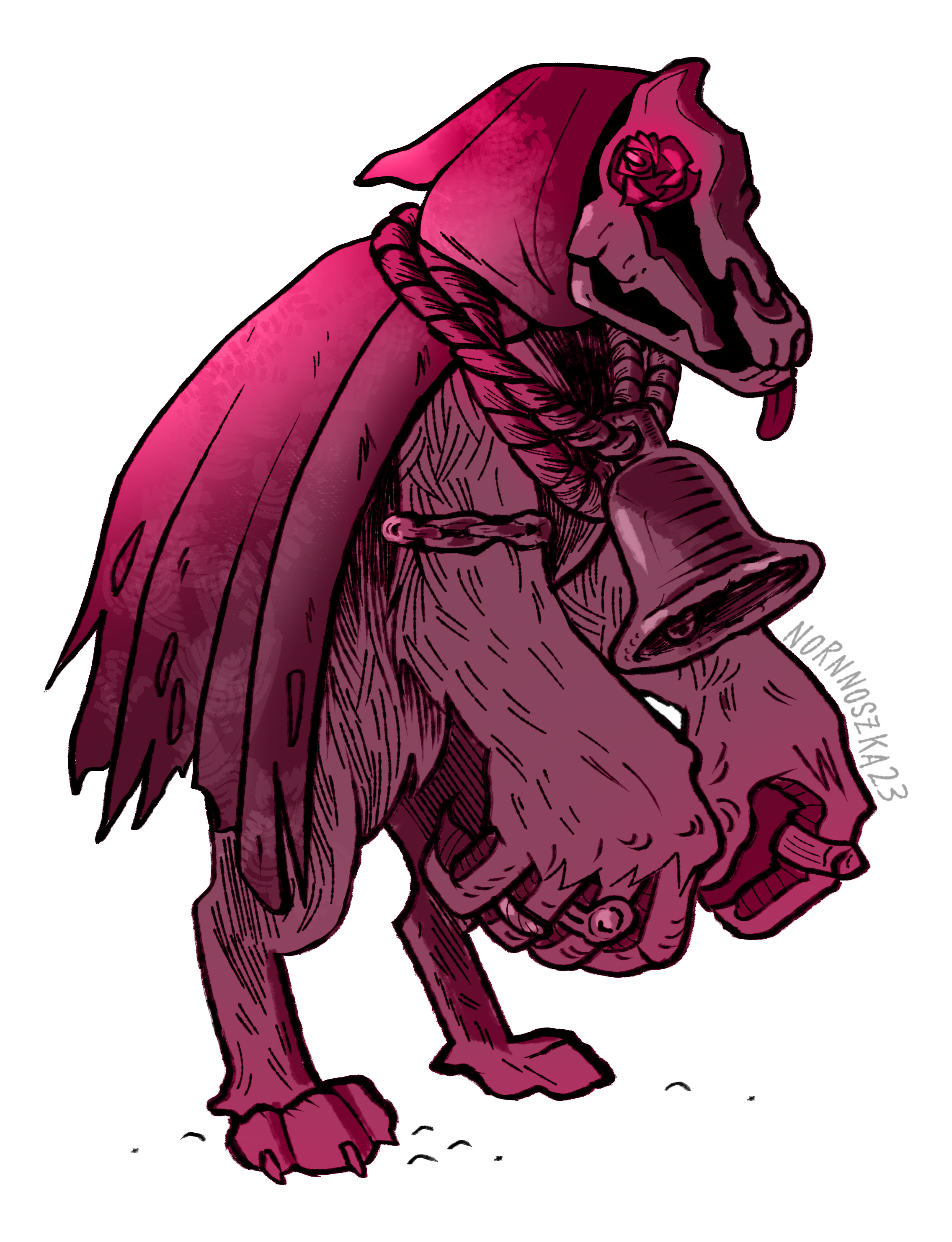 The children run through the village, laughing and singing in harmony. The organist in the temple plays music that would rival even the great masters of the world. The dour fisherman, who smiles for nothing and no-one, hums a cheerful tune. Those who never had the ear for music wake up with perfect pitch, the harmonies sinking into them, resonating with the songs in their souls. Instruments are taken up and mastered, flutes and lutes and little harps. The town gathers at night and sings the deep songs, the true songs, the night songs, smiling and laughing as they dance and embrace.
The children run through the village, laughing and singing in harmony. The organist in the temple plays music that would rival even the great masters of the world. The dour fisherman, who smiles for nothing and no-one, hums a cheerful tune. Those who never had the ear for music wake up with perfect pitch, the harmonies sinking into them, resonating with the songs in their souls. Instruments are taken up and mastered, flutes and lutes and little harps. The town gathers at night and sings the deep songs, the true songs, the night songs, smiling and laughing as they dance and embrace.
Beneath it all, deep within the earth, the demon slumbers, growing stronger with each note that passes through joyful lips.
Gulch
Welcome, traveler, to Gulch. This town ain’t much, but it’s ours, and we’d appreciate it if you’d not muck about in our business, thank you very much. You might be tempted to dive under the surface, get to know the people here, and try helping them out. Don’t. That’s just going to piss someone else off, you see? Best to fill up your car and keep on moving on
Under the Hood of the Garden Wall
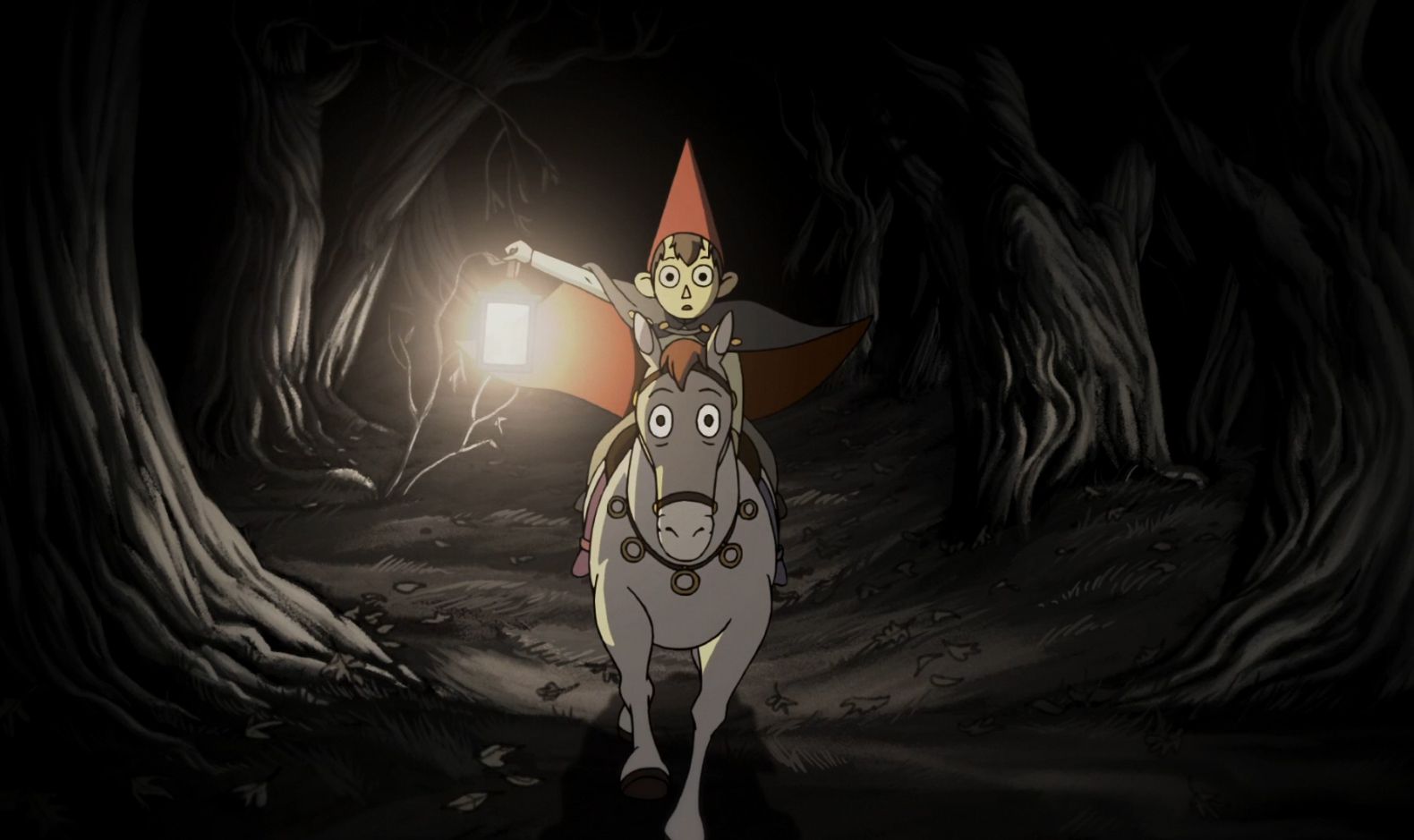
What can Over the Garden Wall teach us about adventure design? The 10 episodes are tight, full of surprises, and effortlessly entertaining. For the most part, they seem to share a foundational structure that we can pull out of the show and apply to roleplaying games. You can’t plan a “story” in an RPG, but that doesn’t mean you can’t set something up to be fun and engaging for everyone at the table.
Ringing the Bell, A Simple Reputation System
Imagine a character that has been through it all: hard fought victories against deadly foes, slaying monsters of legend, delving into depths unknown, and wielding the old magics of the world in the form of their weapons, gear, or arcane trickery. One of the coolest experiences to have at the table with a character like that is when their reputation proceeds them. When their titles are shouted out in backwater towns, when the lord of the land calls upon them to solve a problem, when their past catches up to them because it’s been hard-won in the crucible of action.
There is nothing quite as striking and commanding as a name on the lips of many.
Ransacking the Room
Usually, the way I handle players exploring a location is pretty standard: I describe the location, point out the interesting bits, and let the players inform me how their characters are checking things out. If there are secret things in the location, I’ll hint at them (either in the main description, or in further descriptions as they search). Basically, nothing revolutionary—I’m using Justin Alexander’s Matryoshka Search Technique.
This works really well in ruins, dungeons, haunted forests, and the other milieu you typically find in an OSR-ish game. I, however, am merely a POSR, and my games don’t contain all that many ruined dungeons for the players to explore. Instead, they often find themselves dealing with dangerous locations in populated areas—and that involves a lot of B&E into the lairs of the bad guys.
Spell FRIEND and Enter
In the following post I’m going to lay out a foundational structure for using scrabble tiles in two different, but connected, ways. The first is using the tiles as a key to unlock the ancient dungeons in the world, where the more tiles you have the more dungeons you can unlock (and gain more tiles from). The second application comes in a Tears of the Kingdom-esque application of creativity, where your characters can use the tiles to magically modify objects in the world to solve the problems they encounter.
This requires two things to be true about the setting.
Question-Based Adventure Design (Q-BAD)
Anyone who knows me knows how much I love spreadsheets, and that’s why—like an absolute freak—I write the first draft of my adventures in a spreadsheet. Hold on. Don’t leave. You don’t have to use a spreadsheet. It’s just easiest for me.
There’s really only one step to that first draft—and I’m using first draft pretty loosely here—instead of something hammered down, ready for editing, my initial pass on an adventure mostly lives inside of my head, with about 10% of it on the spreadsheet, like some kind of RPG iceberg.
Tension Cheatsheet
In the latest POSR game I’ve been running we’ve played eleven sessions and the players have only explored two dungeons—and those dungeons only took five sessions between both to clear to their satisfaction. That means that for this game, we’ve spent six sessions not dungeon crawling.
Lots of stuff has happened. They rooted out the cause of a missing village. They met with the leader of a powerful clan in the last city. He introduced them to his “burn everything, ask questions never” special forces team dedicated to taking out cosmic-monster worshipping clans hidden about. They’ve made friends with a group of travelling merchants called the Nine Thumbs. They’ve went to a dark and spooky theatre and watched a performance about themselves. They’ve made a lot of messes, too. Right now, they’re attending the “wedding of the year” between two clan scions.




 The children run through the village, laughing and singing in harmony. The organist in the temple plays music that would rival even the great masters of the world. The dour fisherman, who smiles for nothing and no-one, hums a cheerful tune. Those who never had the ear for music wake up with perfect pitch, the harmonies sinking into them, resonating with the songs in their souls. Instruments are taken up and mastered, flutes and lutes and little harps. The town gathers at night and sings the deep songs, the true songs, the night songs, smiling and laughing as they dance and embrace.
The children run through the village, laughing and singing in harmony. The organist in the temple plays music that would rival even the great masters of the world. The dour fisherman, who smiles for nothing and no-one, hums a cheerful tune. Those who never had the ear for music wake up with perfect pitch, the harmonies sinking into them, resonating with the songs in their souls. Instruments are taken up and mastered, flutes and lutes and little harps. The town gathers at night and sings the deep songs, the true songs, the night songs, smiling and laughing as they dance and embrace.
